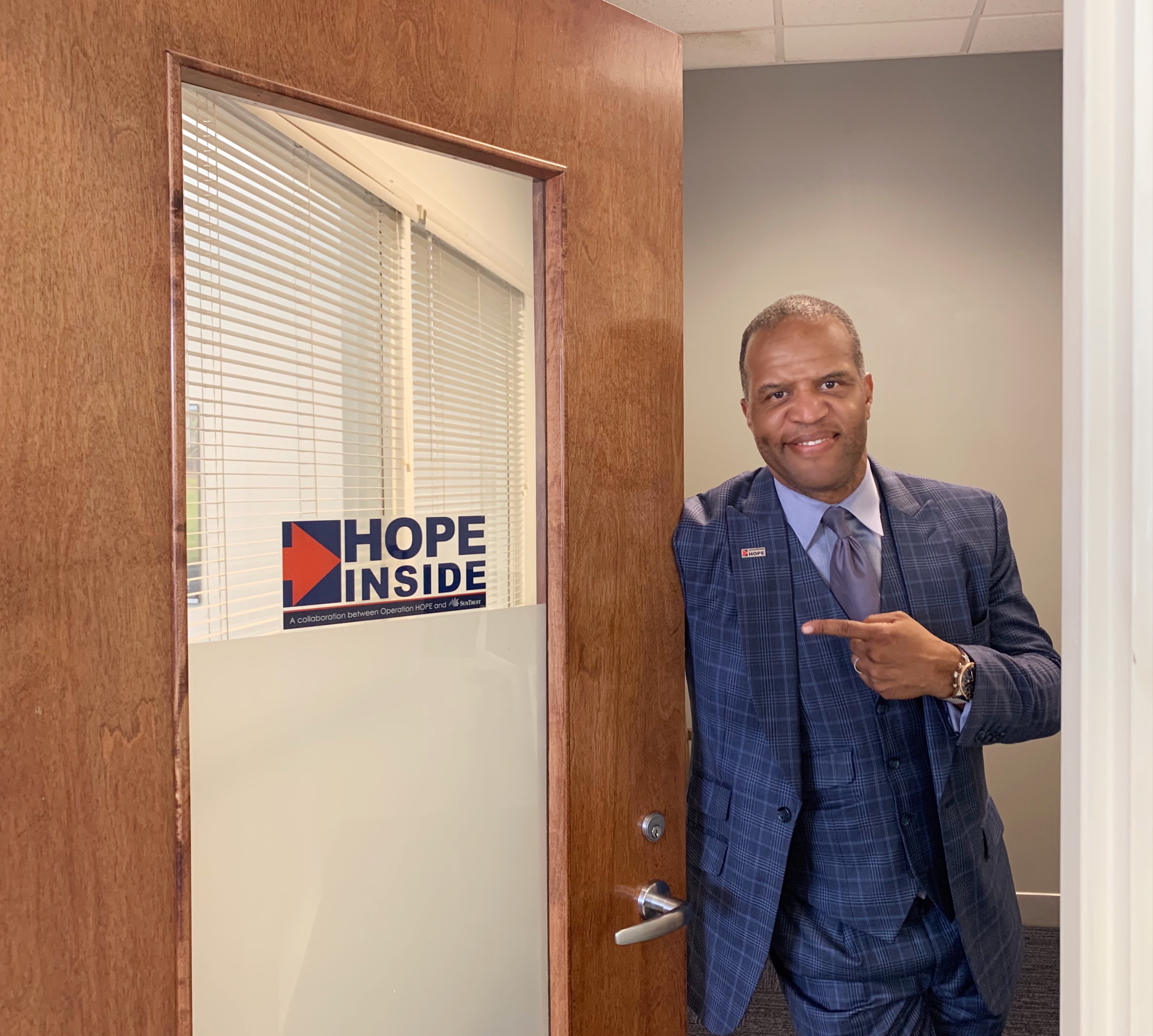
I am so very excited about the newest innovation at Operation HOPE, namely HOPE Inside. And most recently, the HOPE Inside the Workplace model.
The premise for HOPE Inside is simple: to get FDIC insured banks ‘out of the no business, and back into the yes business.’ We do this by working with clients who we know will otherwise be declined for a bank loan to ‘back them into a loan approval’ through our established and proven process at Operation HOPE. In our old model, we use to refer to this as our ‘no loan denied’ promise, whereby we would endeavor to approve an applicant (using our own balance sheet at Operation HOPE), subject only to the resolution of their primary denial factors. And if the bank failed to prove their loan after that, then we would.
HOPE Inside is now in more than 40 FDIC banks across the nation, with some of our outlier partners including SunTrust Banks (soon to be Truist), who committed to opening 200 HOPE Inside locations over time, Regions Bank that committed to opening 100 HOPE Inside locations, First Tennessee Bank (the largest bank in Tennessee), which today operates 10% of their total bank branch network as HOPE Inside locations, Fulton Bank where we have helped them create 200M+ of new homeowners from underserved communities in their footprint, and even JP Morgan Chase, where we are beginning to stand up a few locations.
The HOPE Inside model won the ‘Innovator of the Year’ Award from the American Banker in 2016, becoming for them the first nonprofit organization that combined a community mandate with a tangible business outcome. Essentially, HOPE Inside was and is committed to rehabilitating and re-introducing an entire generation of applicants and future ownership and opportunity aspirants into the banking system.
The premise for HOPE Inside the Workplace is similarly simple, yet transformational. With HOPE Inside the Workplace we acknowledge what many leaders in the national healthcare space are now increasingly raising alarms about — that the next health crisis in America just might be a lack of financial wellbeing. Financial stress that leads to a crisis of health and wellness. 70% of Americans are living from paycheck to paycheck, 64% of Americans don’t have $500 in time of an unplanned event, and 54% of American workers are so stressed out about money on the job that they are spending upwards of 28 hours a month on the job, stressing (and immobilized) about money.
Said simply, we have said to some of America’s biggest companies, ‘if we cannot afford to pay our workers more, then let’s agree to treat them better.’ And they responded in kind by committing to offer the HOPE Inside the Workplace model to and for their benefit of their line and workforce employees.

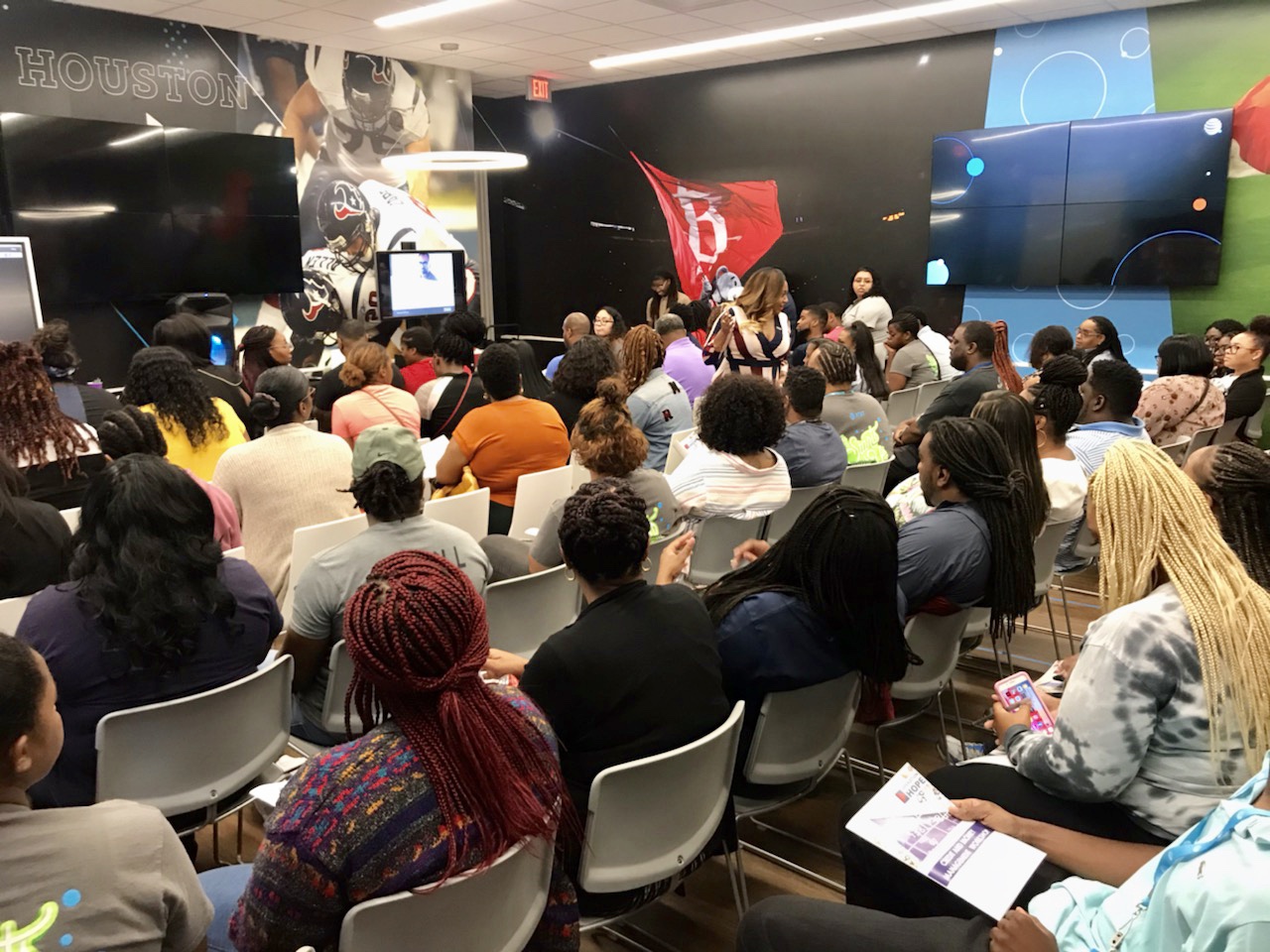
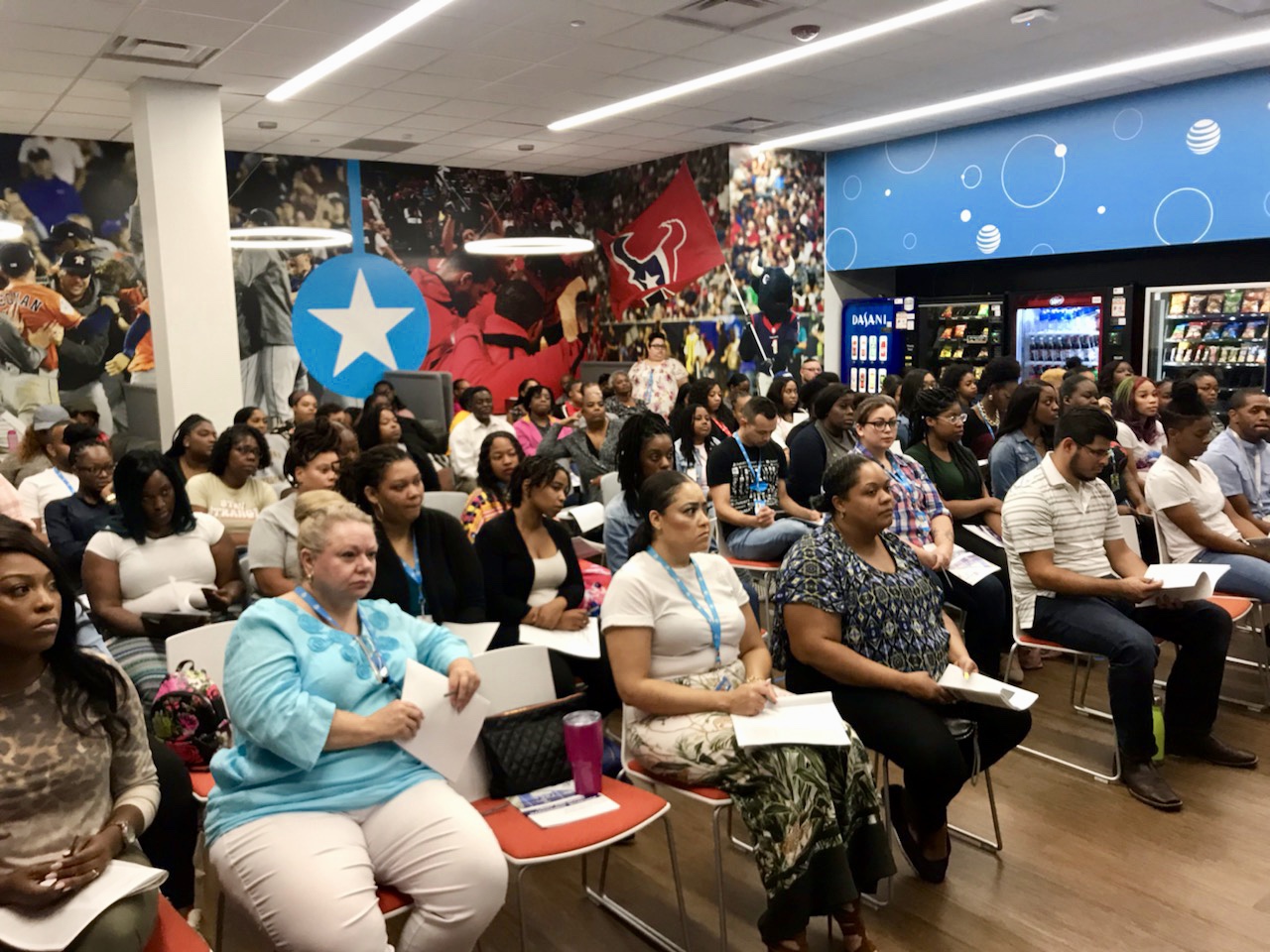
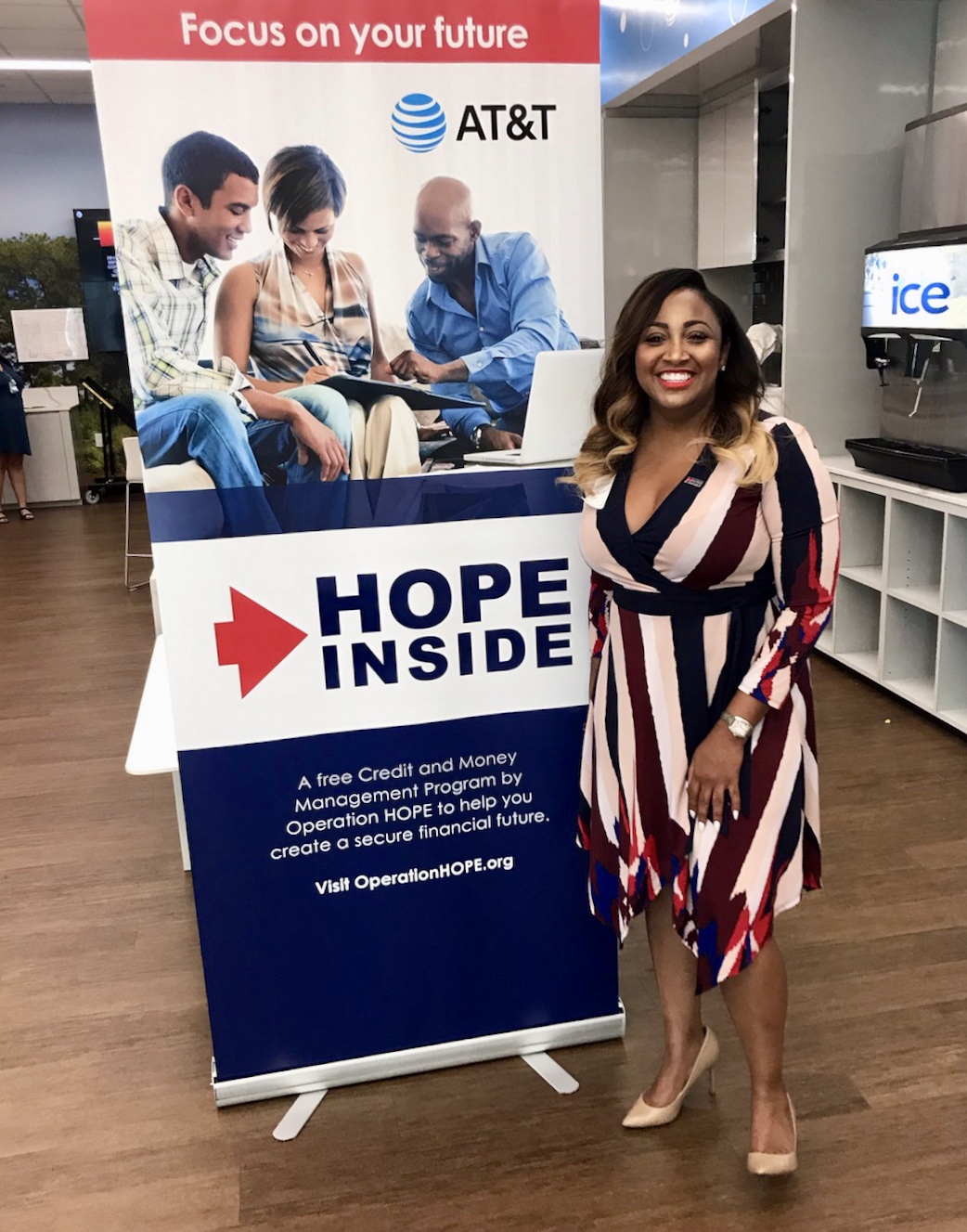
Today Operation HOPE has operationalize commitments for the HOPE Inside the Workplace model from and with major corporations such as UPS, Delta Airlines and AT&T. The model is also embedded within the Atlanta Police Department and Atlanta Public Schools, both sponsored by SunTrust Banks.
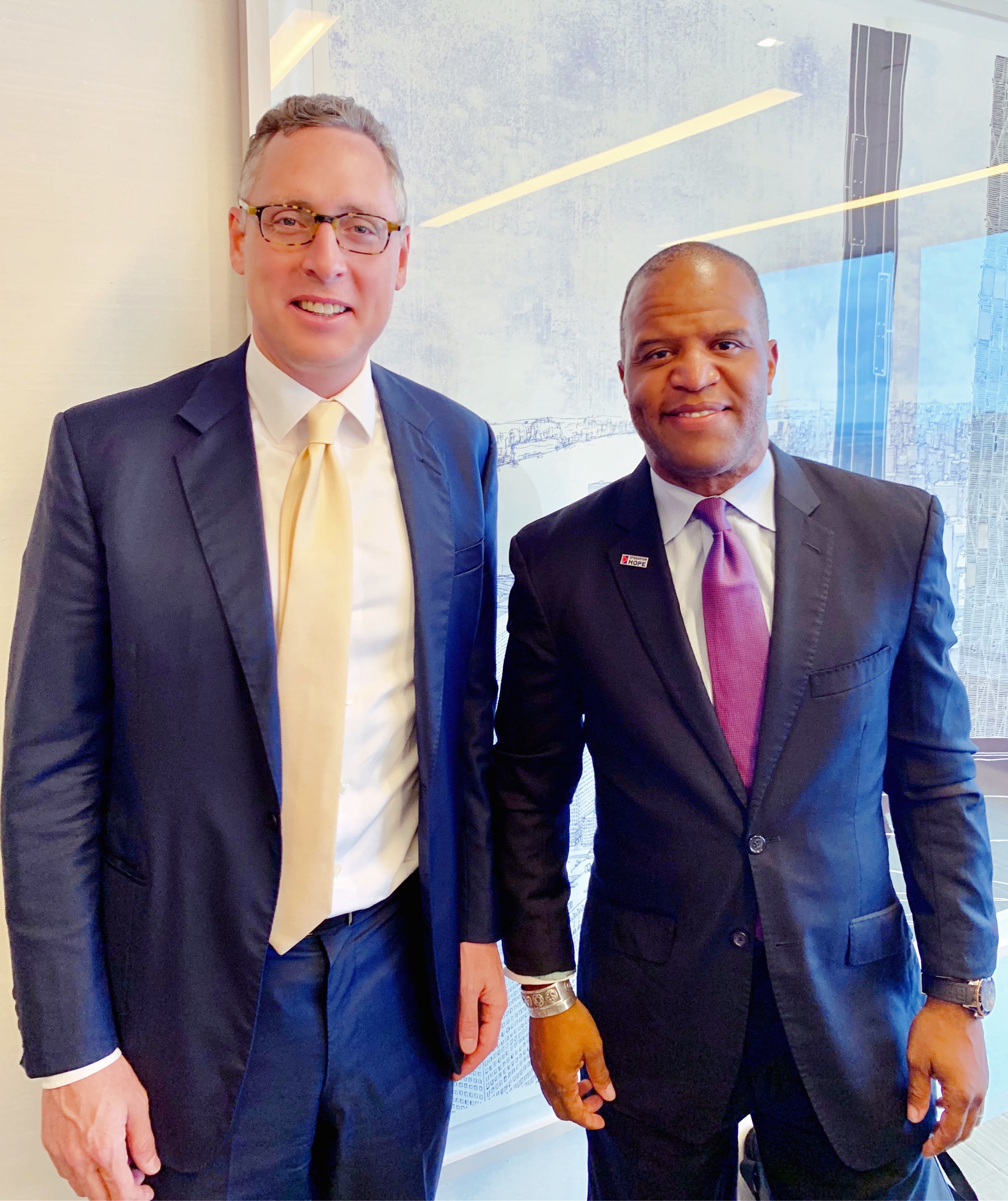
Most recently one of the portfolio companies of Wall Street giant KKR has found solid and impressive results from our model program for workers. KKR leadership, led by Pete Stavros, Partner of KKR and leader of the Industrials Group, has now begun to introduce the HOPE Inside the Workplace model to a broad range of their industrial companies leadership throughout the country.
Working in concert with HOPE Inside and HOPE Inside the Workplace, is our HOPE Inside Disaster Response & Recovery.
The premise for our HOPE Inside Disaster Response & Recovery model is that in the aftermath of natural disasters, individuals, families and organizations know where to go for emergency medical and emotional assistance (the American Red Cross). People also know where to turn to within our local, state and federal government for support (FEMA, and local emergency managers). But after your physical, emotional and safety issues are addressed, individuals will soon begin to experience the financial and economic impact of disasters. Car loans, attached to automobiles upside down or destroyed. Home loans, but now there is a tree through the roof of the house. Bills due and incomes interrupted, but very little positive communication between survivor and their credit providers. All of this along with a wide range of other associated challenges and issues — that up until now, there was no resource available to anyone.
HOPE Inside Disaster Response & Recovery ‘solved for all of that,’ and in so doing, helped to pioneer the federal policy space of emergency financial disaster preparedness, response and recovery, with our pioneering agreement with DHS/FEMA immediately following 9/11.
HOPE also partnered with FEMA to create the Emergency Financial First Aid Kit (EFFAK), an official federal government document that has now been downloaded millions of times for citizens in need. HOPE Inside Disaster Response & Recovery, backed by the US Economic Development Administration (US Department of Commerce) is now leaning into mid to long term financial and economic disaster recovery in Puerto Rico.
Today HOPE Inside Disaster Response & Recovery is the official emergency financial disaster preparedness, response and recovery partner for DHS/FEMA and the American Red Cross.
The overall HOPE Inside Model carries with it 22 federal government credentials, including HUD (for certified home ownership counseling), US SBA, FEMA, FDIC, OCC, CFPB and a host of others.
In short, HOPE (as in Operation HOPE, on the ground) is on the move!
Operation HOPE was awarded the highest ranking possible from Charity Navigator for fiscal, financial, administrative and programmatic management, which is a 4-Star Rating. This is the 4th year in a row that Operation HOPE has received this coveted ranking, placing it in the top quartile (top 25%) of all nonprofit organizations nationally.
For more information on Operation HOPE and its HOPE Inside model, contact our corporate office here. Our president is Dr. Anita Ward.
Onward and with HOPE,
John Hope Bryant, founder
